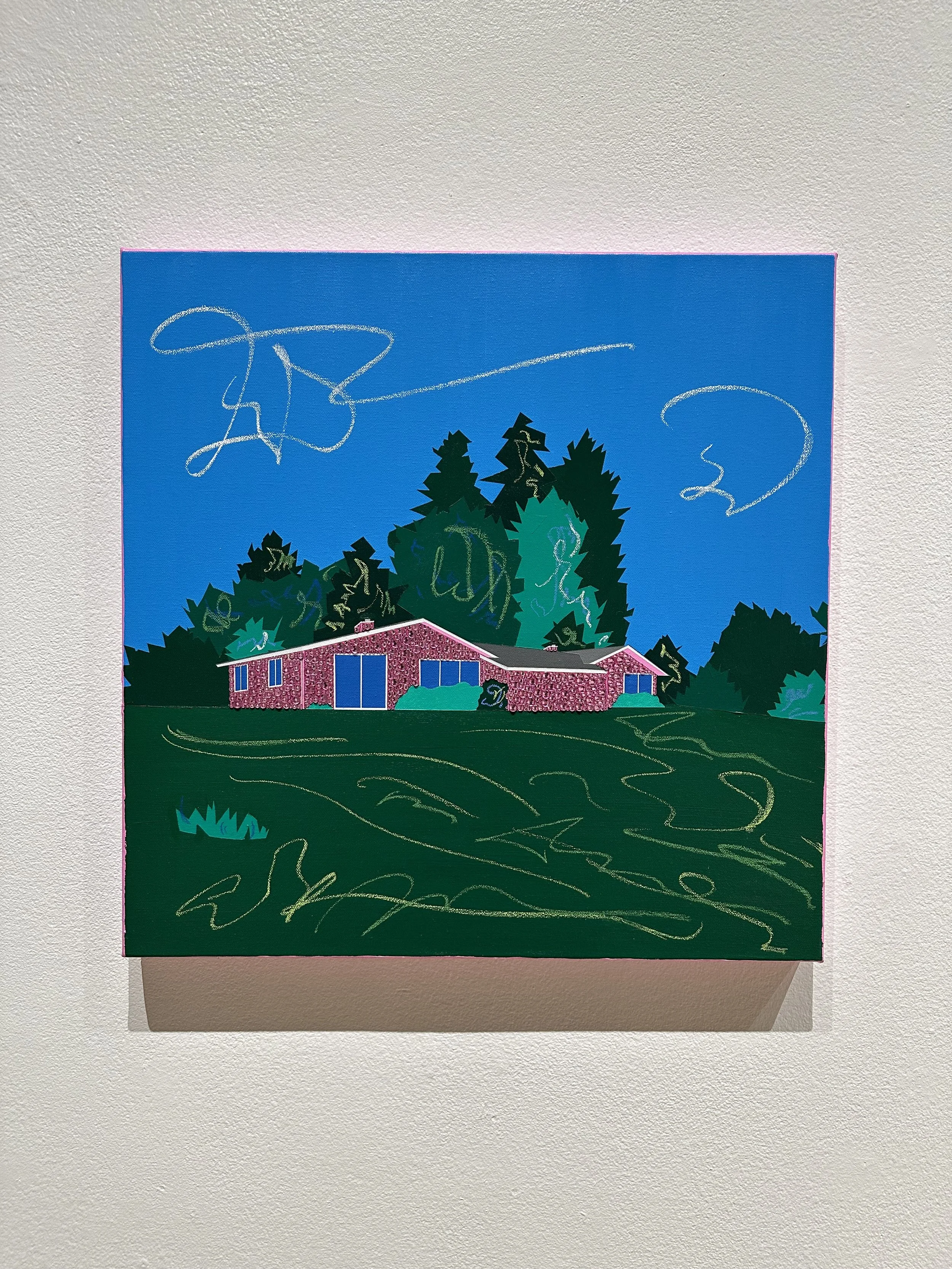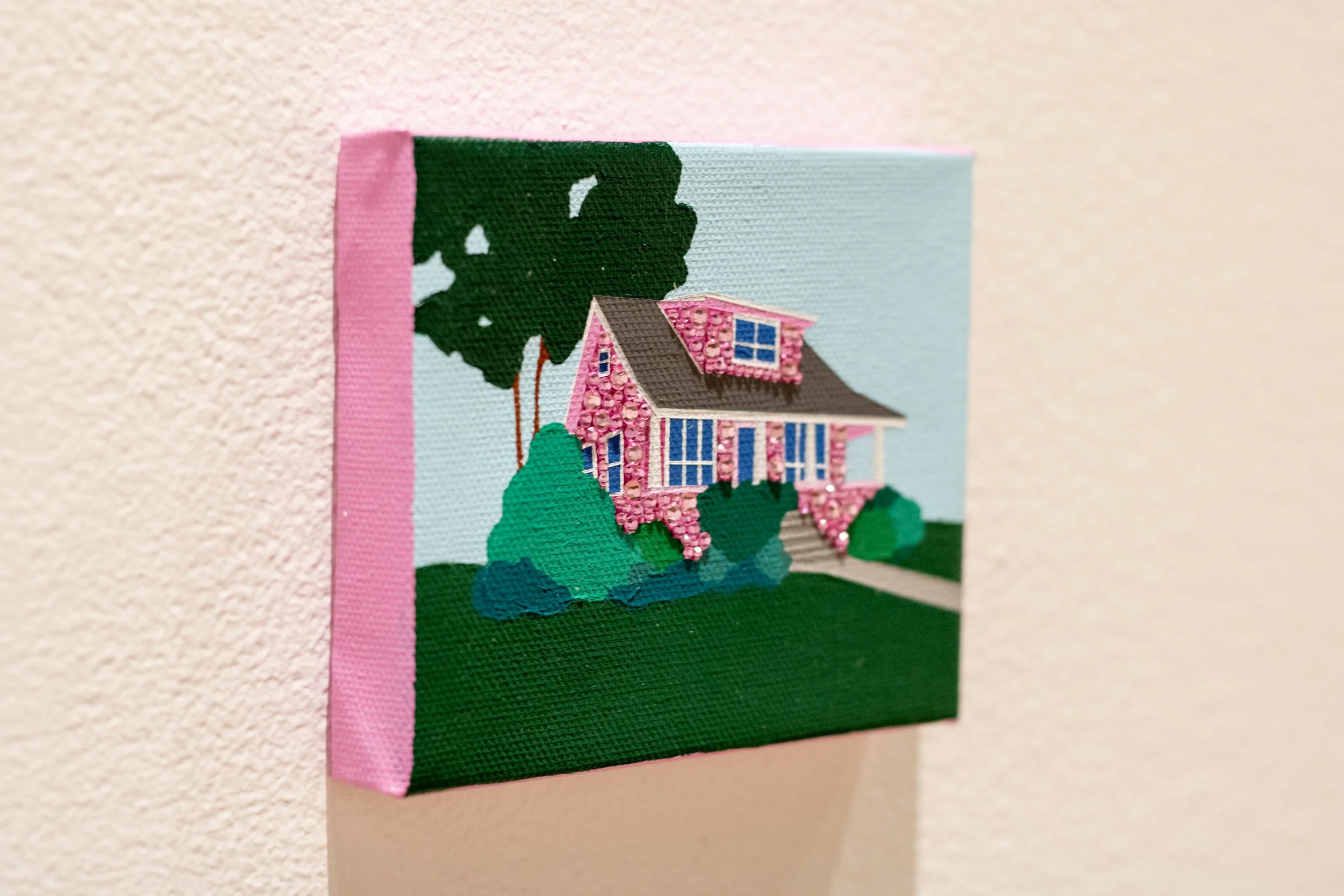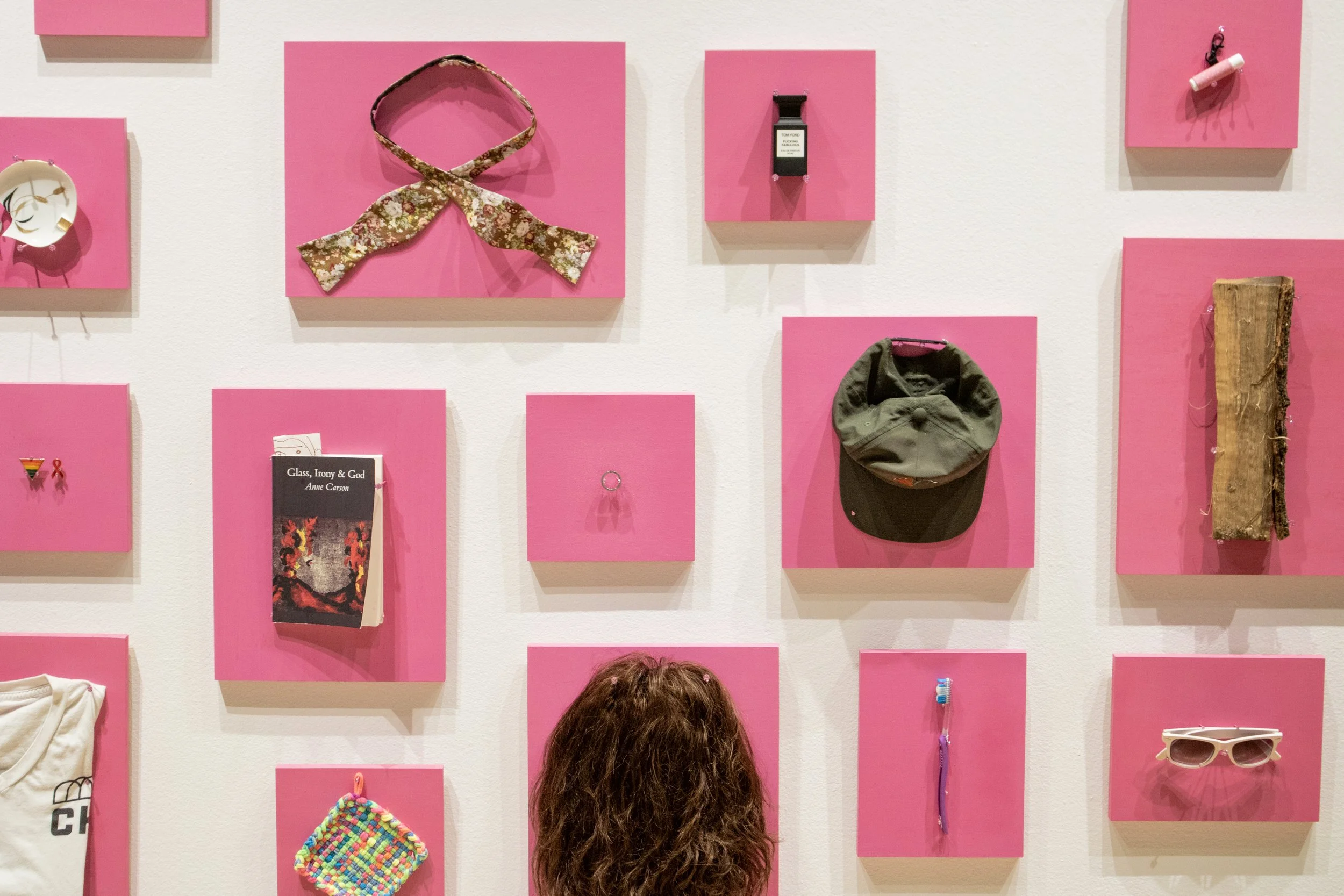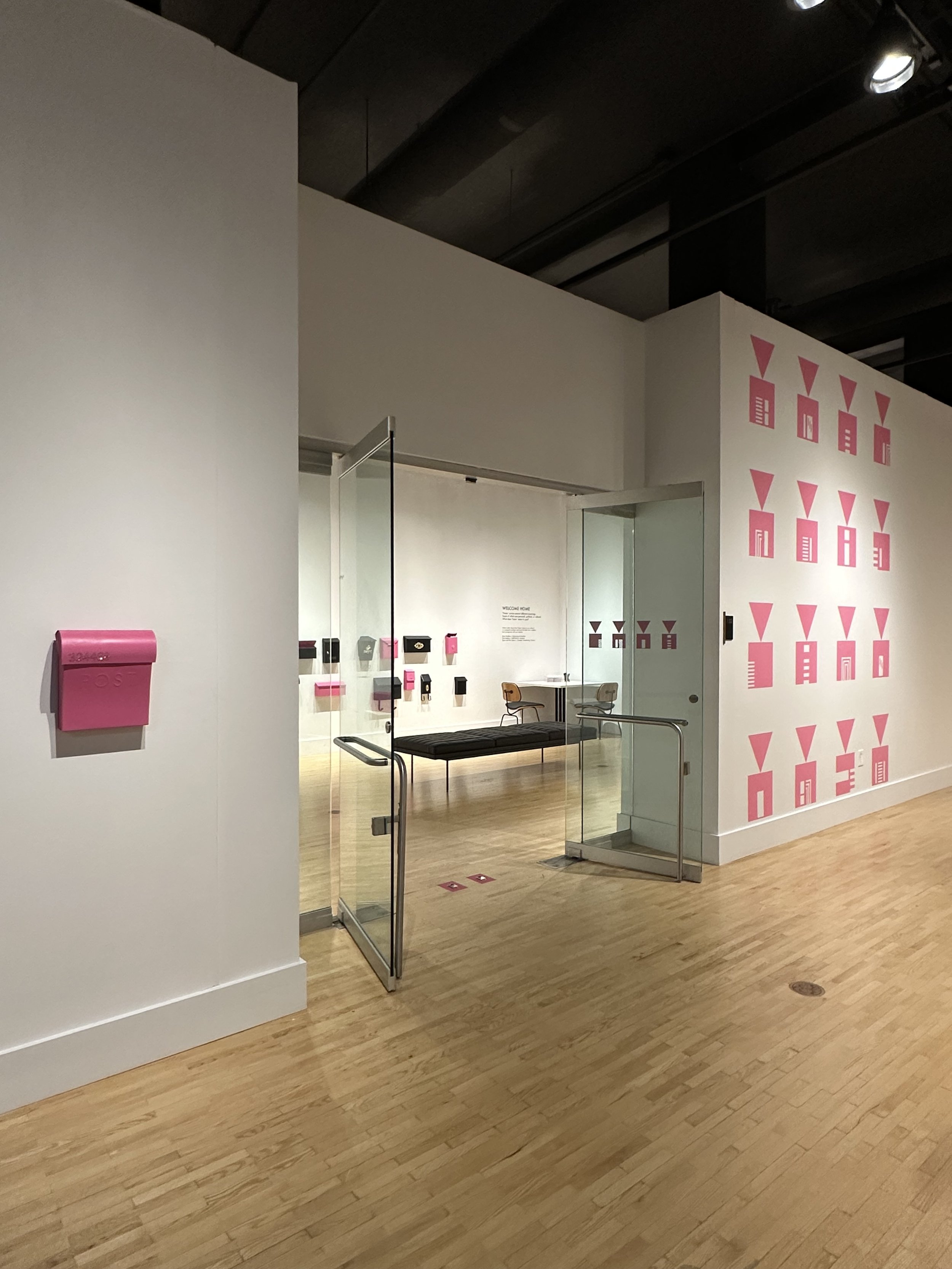
HOME
Flex Gallery | Kendall College of Art and Design of Ferris State University, Grand Rapids, Michigan
November 13 - December 5, 2023
HOME is often the site of personal discovery, privacy and comfort.
In North American culture, the ideological construct of the single-family home has become a symbol of heteronormative culture. Intentionally, single-family homes have reinforced heterosexualism, gendered roles, and have enabled further segregation of race, ethnicity, and class. Culturally constructed imagery and built home environments have aided in the shaping of our identities while reinforcing these dominant binary norms.
Since the 1940s, ‘home’ has been a site of contention and investigation for LGBTQIA2S+ individuals who do not fit within heteronormative cultural binaries. ‘Home’ embodies several different meanings: for some, a sense of community and safety, for others, a sense of insecurity and identity negotiation. In the 1960s, “coming out of the closet” came into use as a method for disclosing one’s queerness, positioning them in opposition of heteronormative ideologies. Where queerness has often been represented historically through ethnographic evidence that positions queerness as other, HOME allows queer individuals to write their own unique experiences about ‘home.’
HOME presents the multifaceted experience of queer home life through a series of work that focuses on the tension of physical space and the construction of identity. From the public-facing exterior to the private interior space, queer histories are recorded and presented in WELCOME HOME, PORTRAITS, and CLOSET.
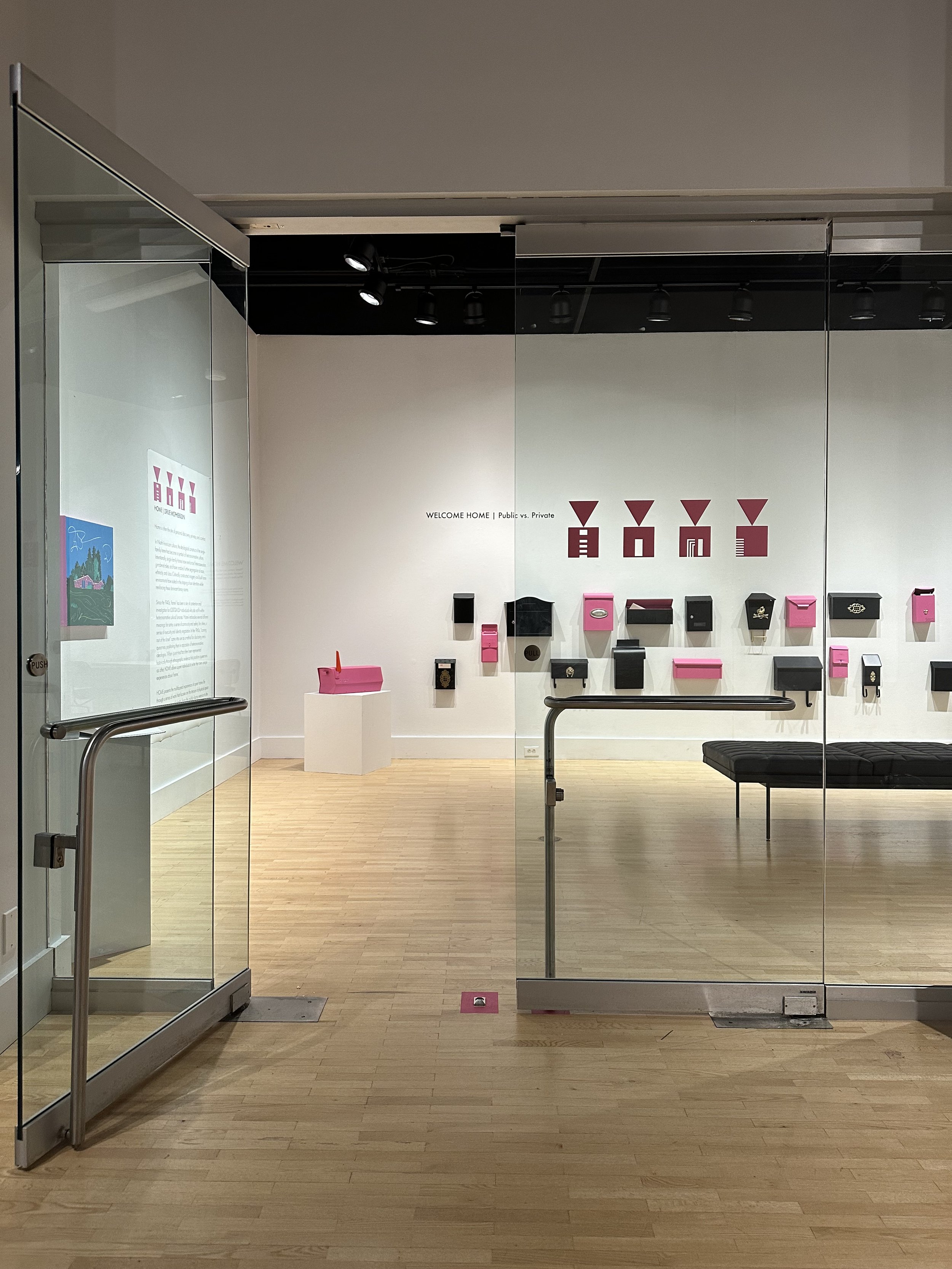
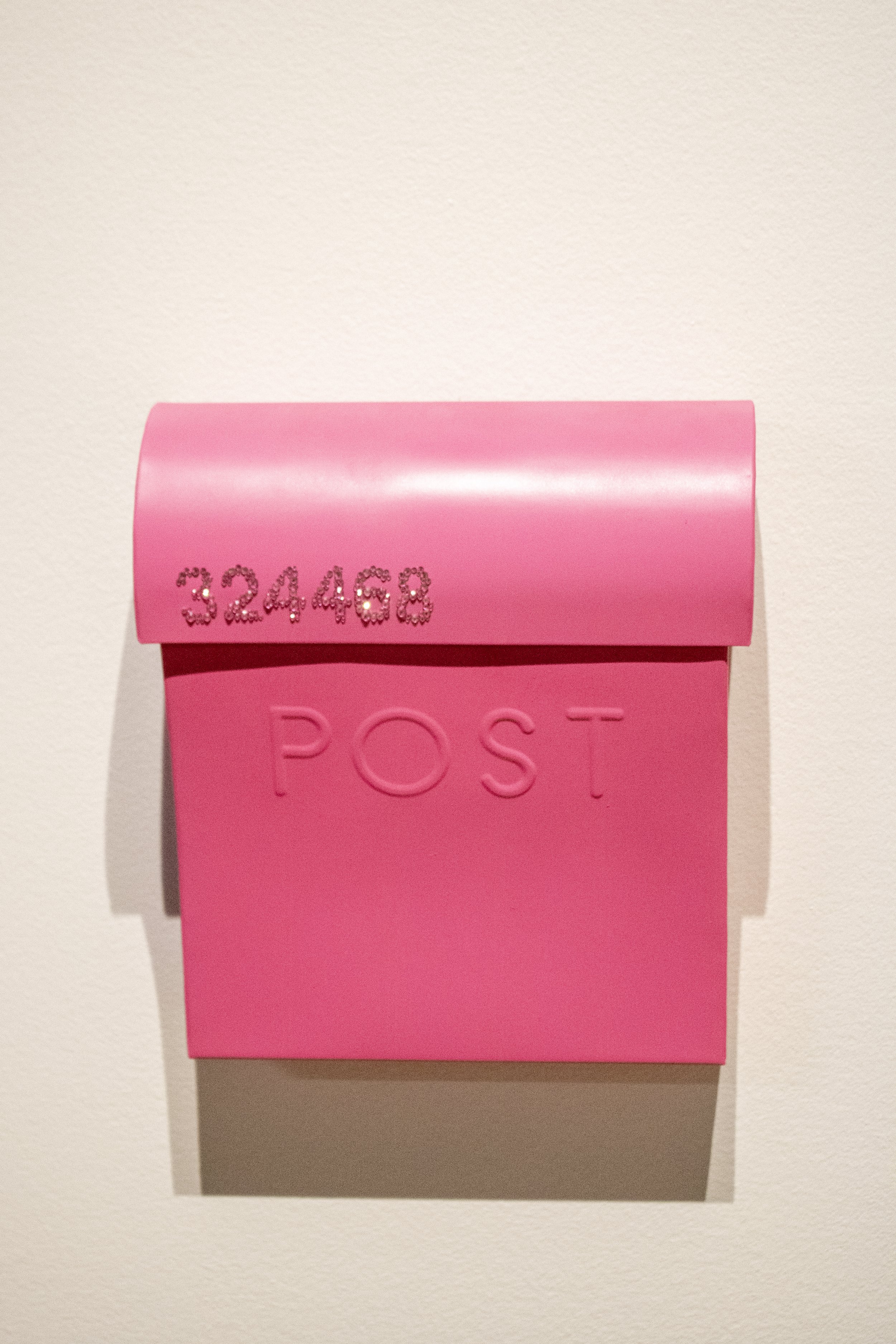
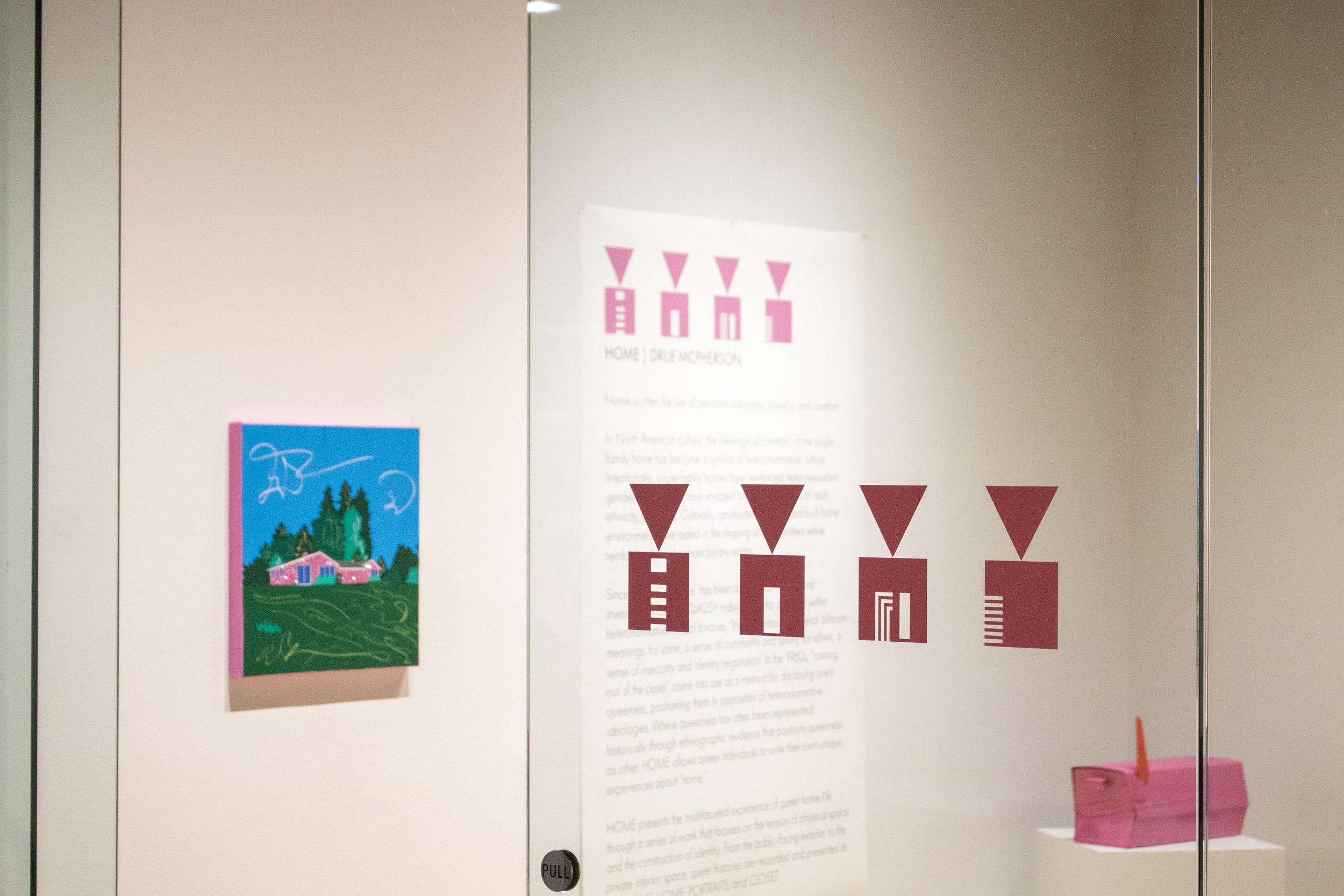
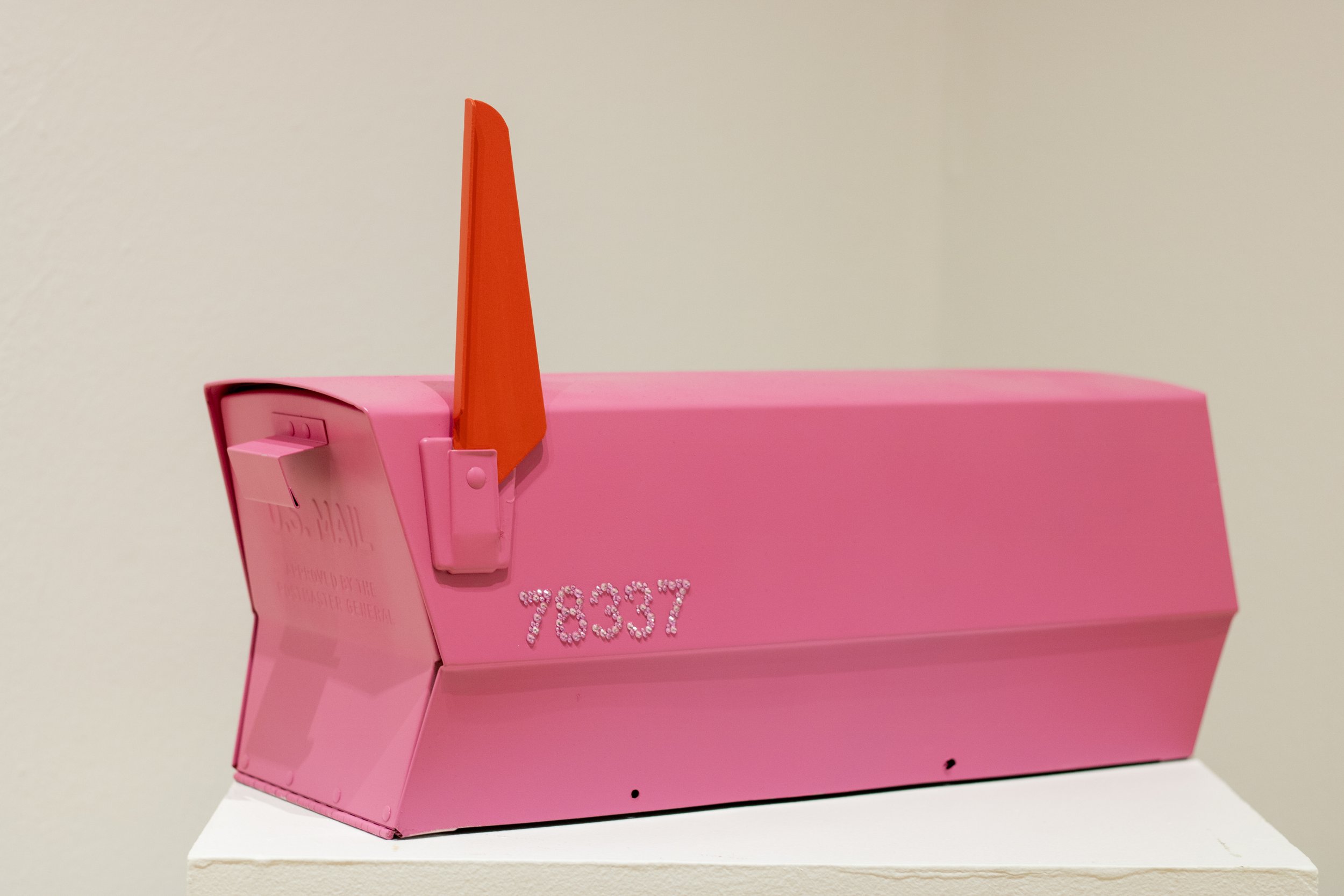
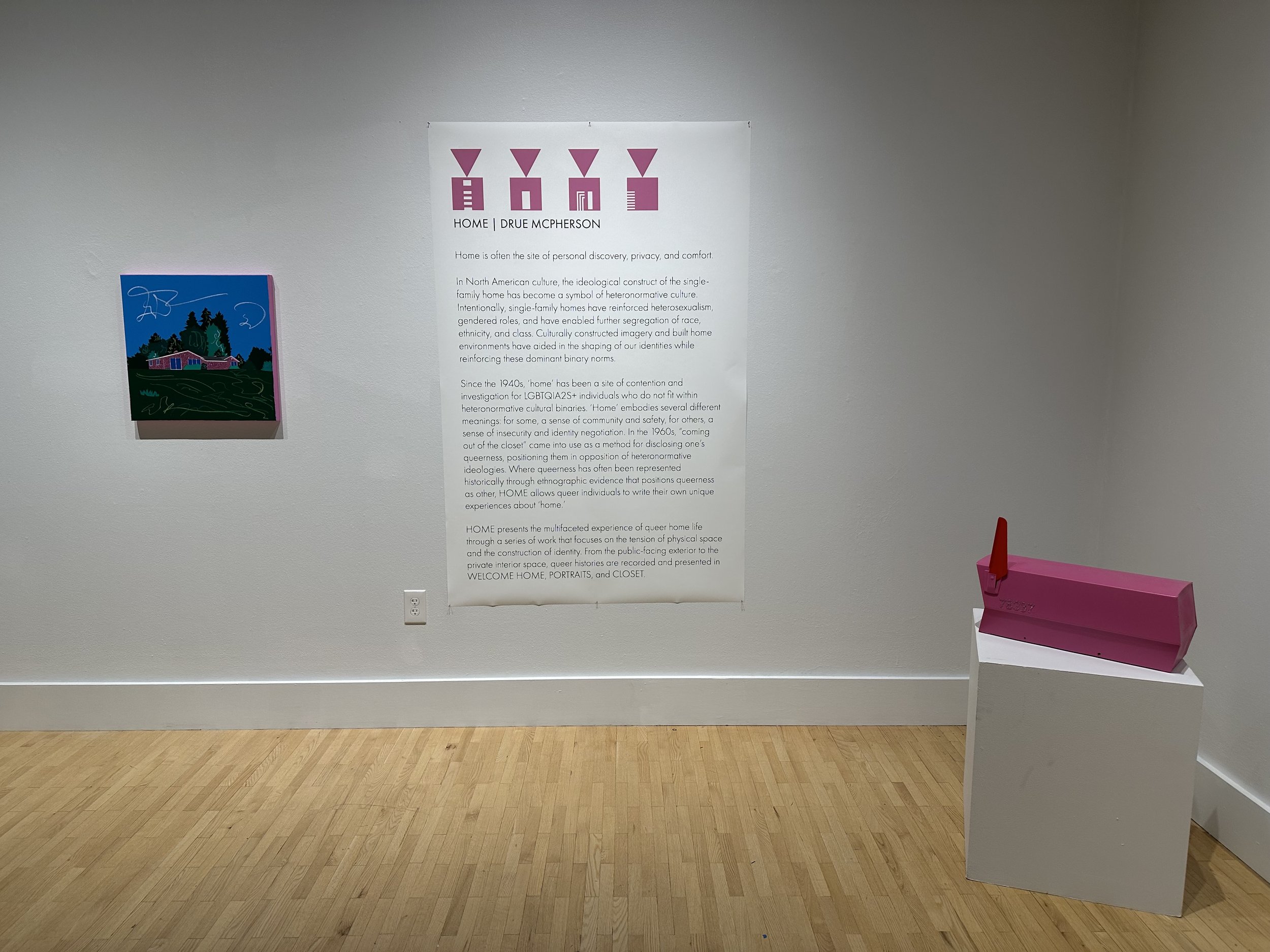
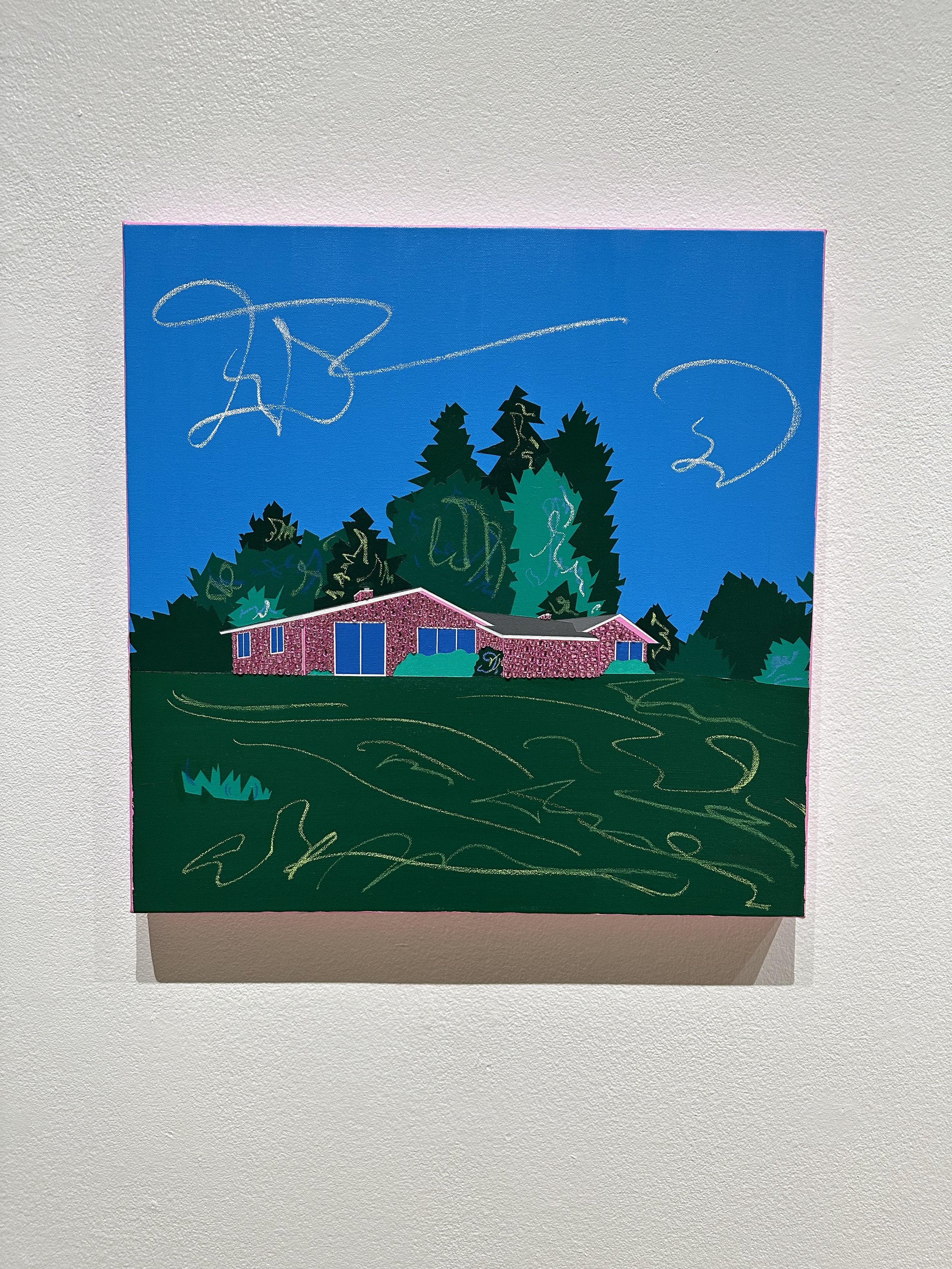

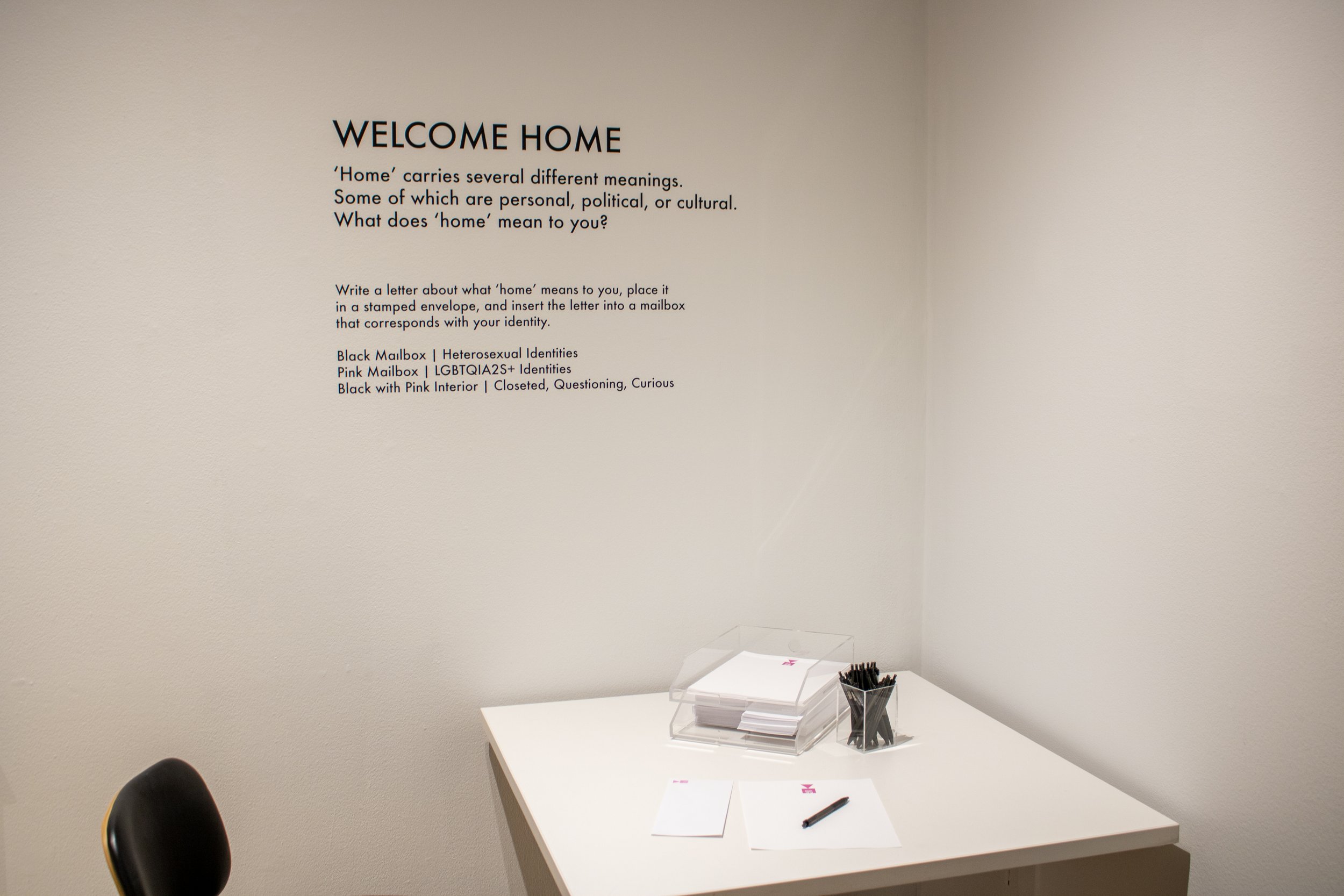
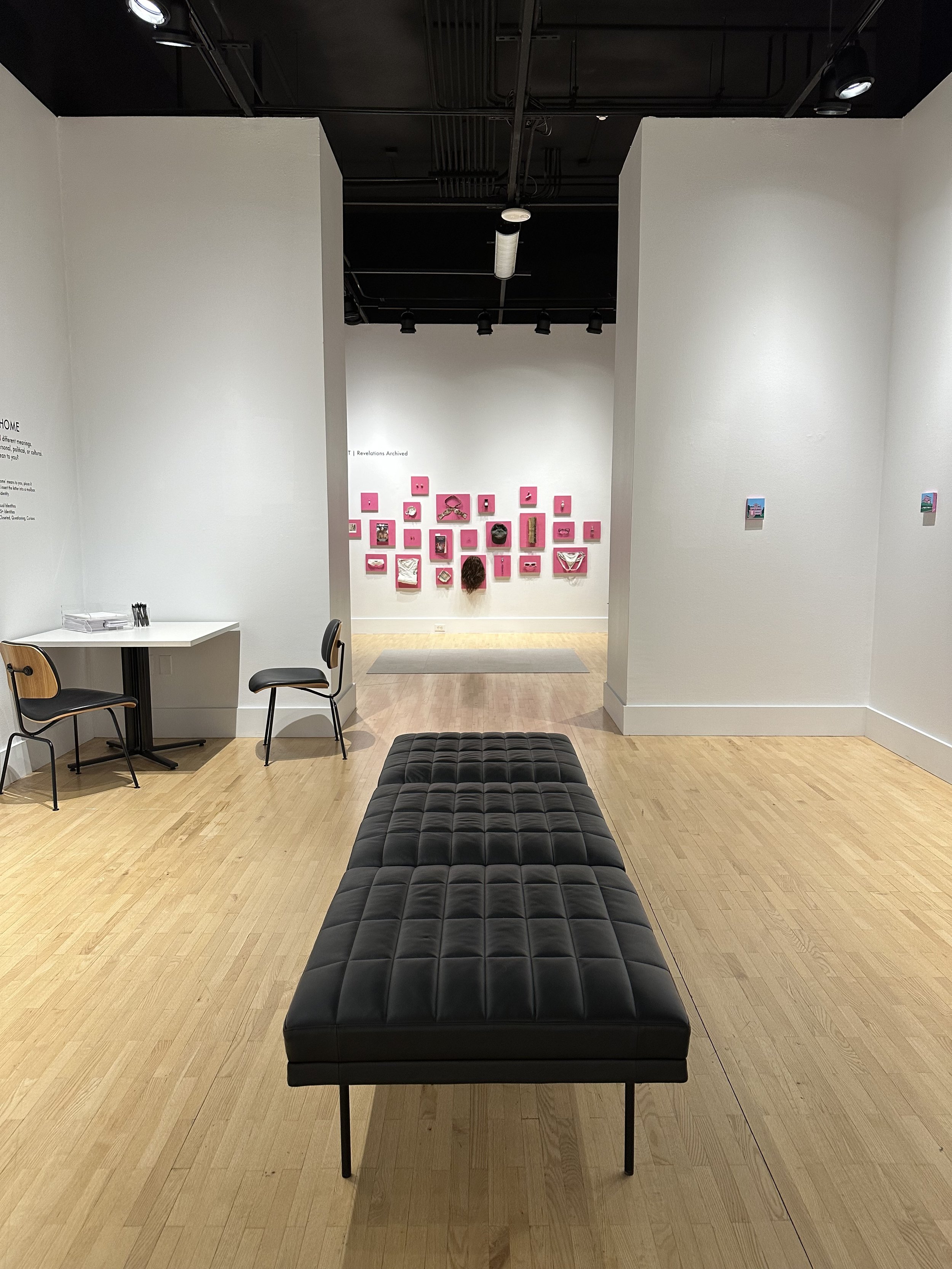
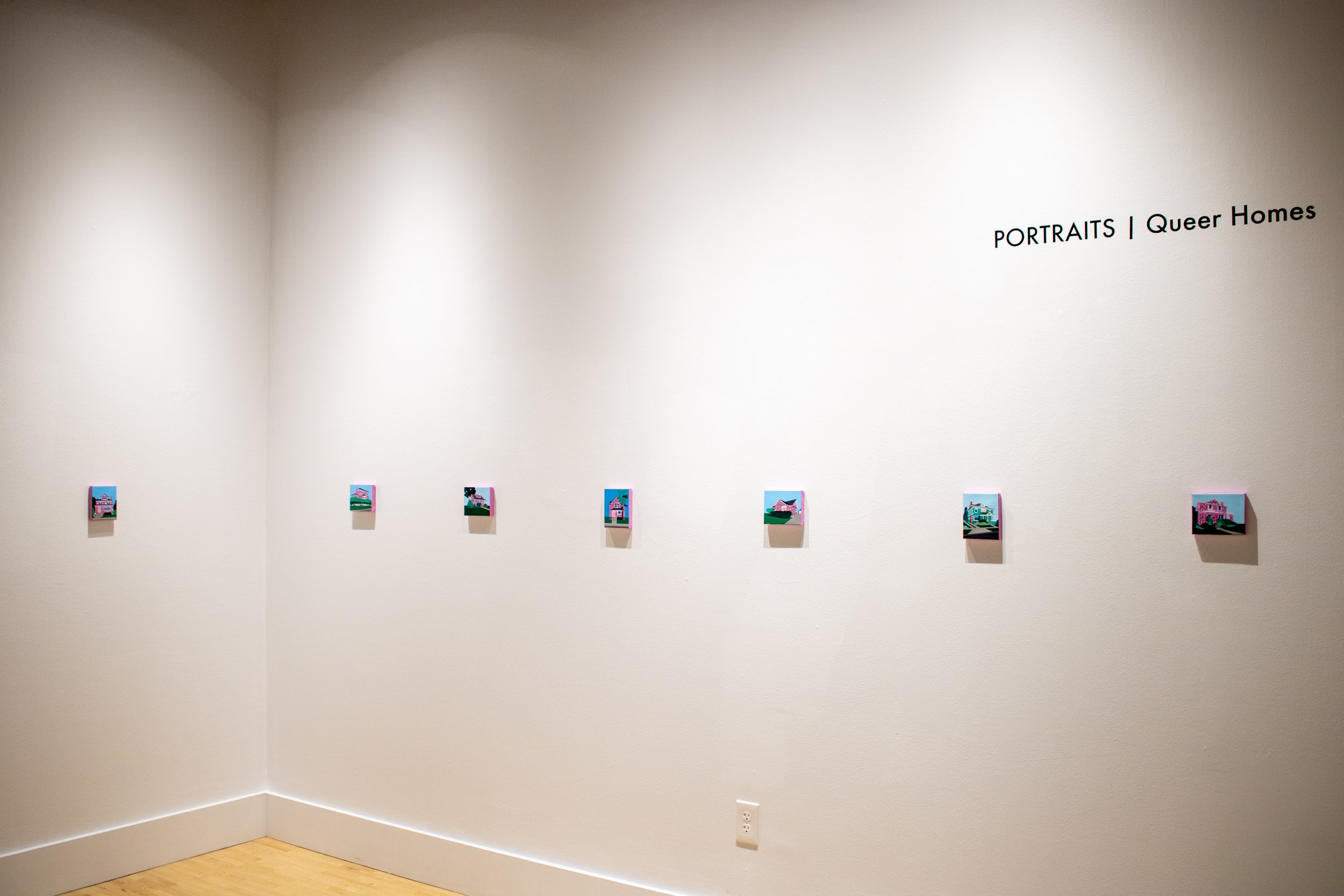
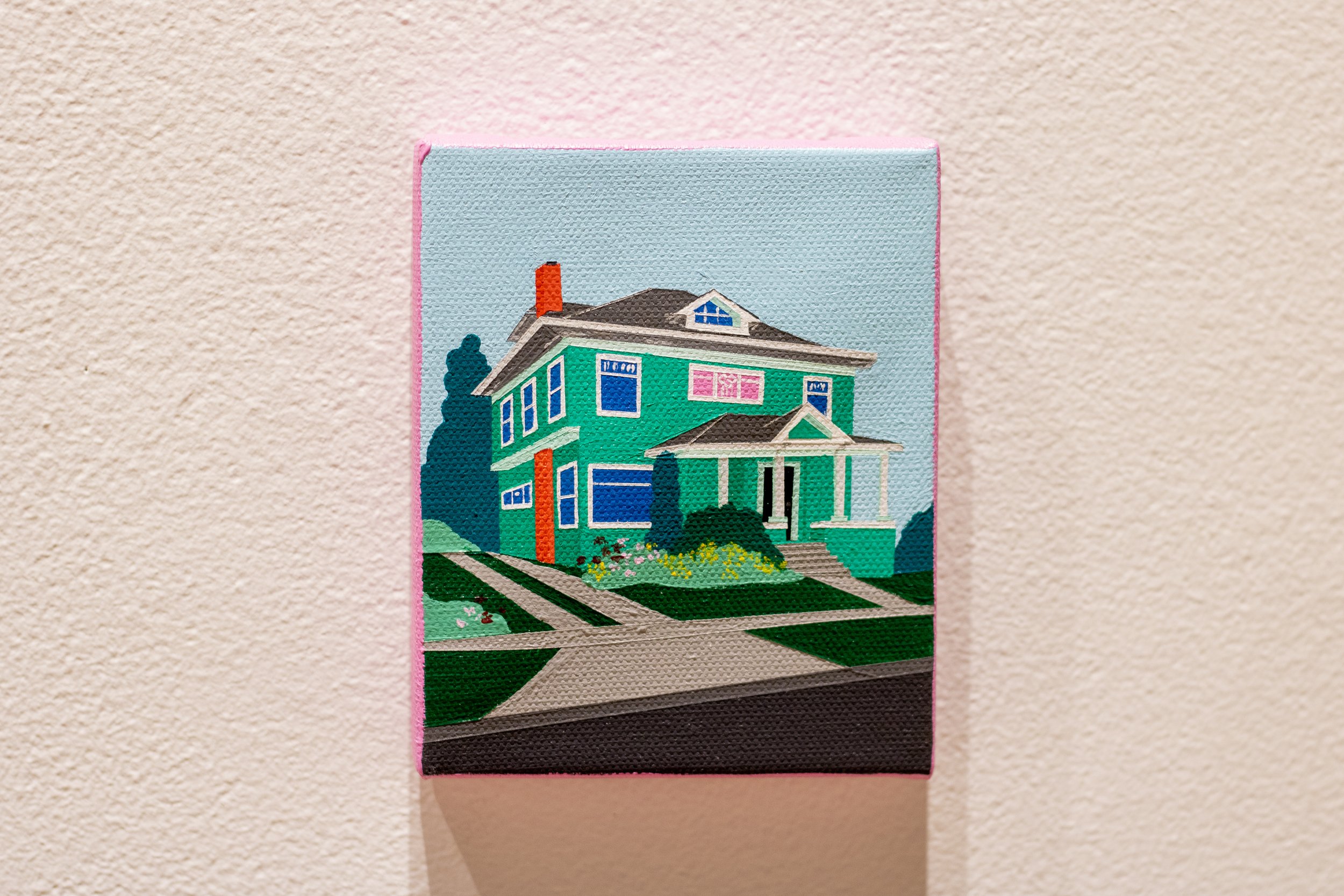
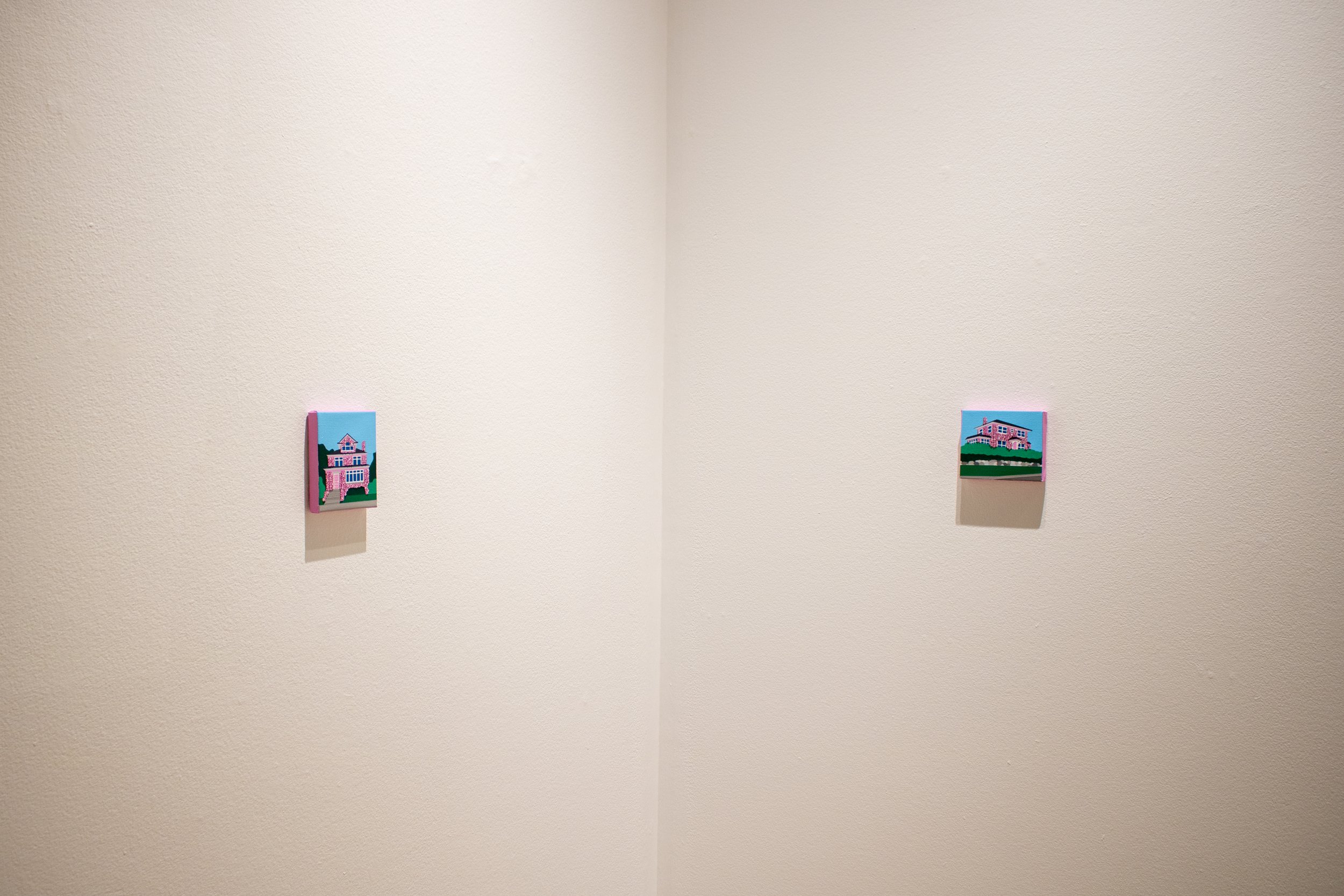
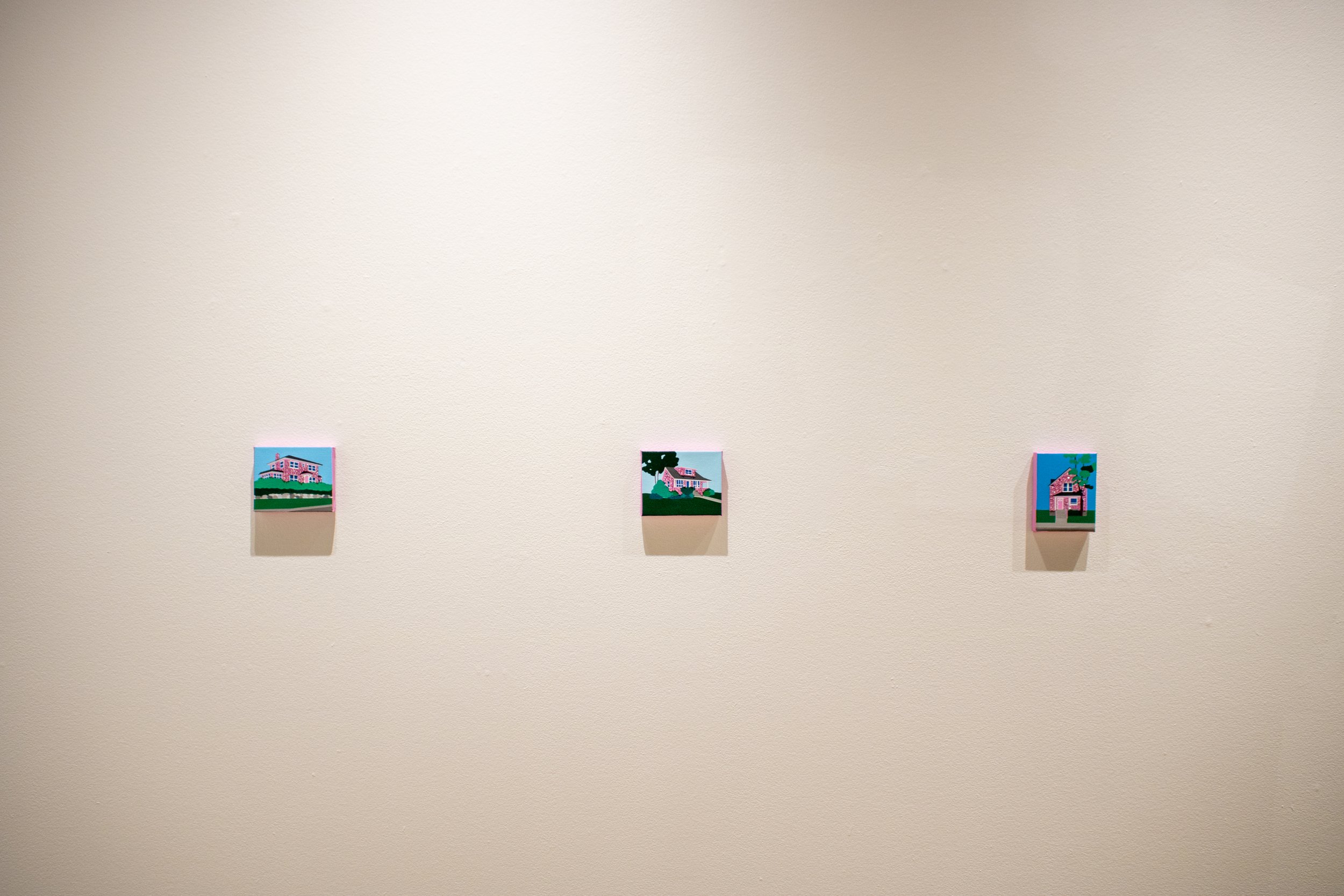


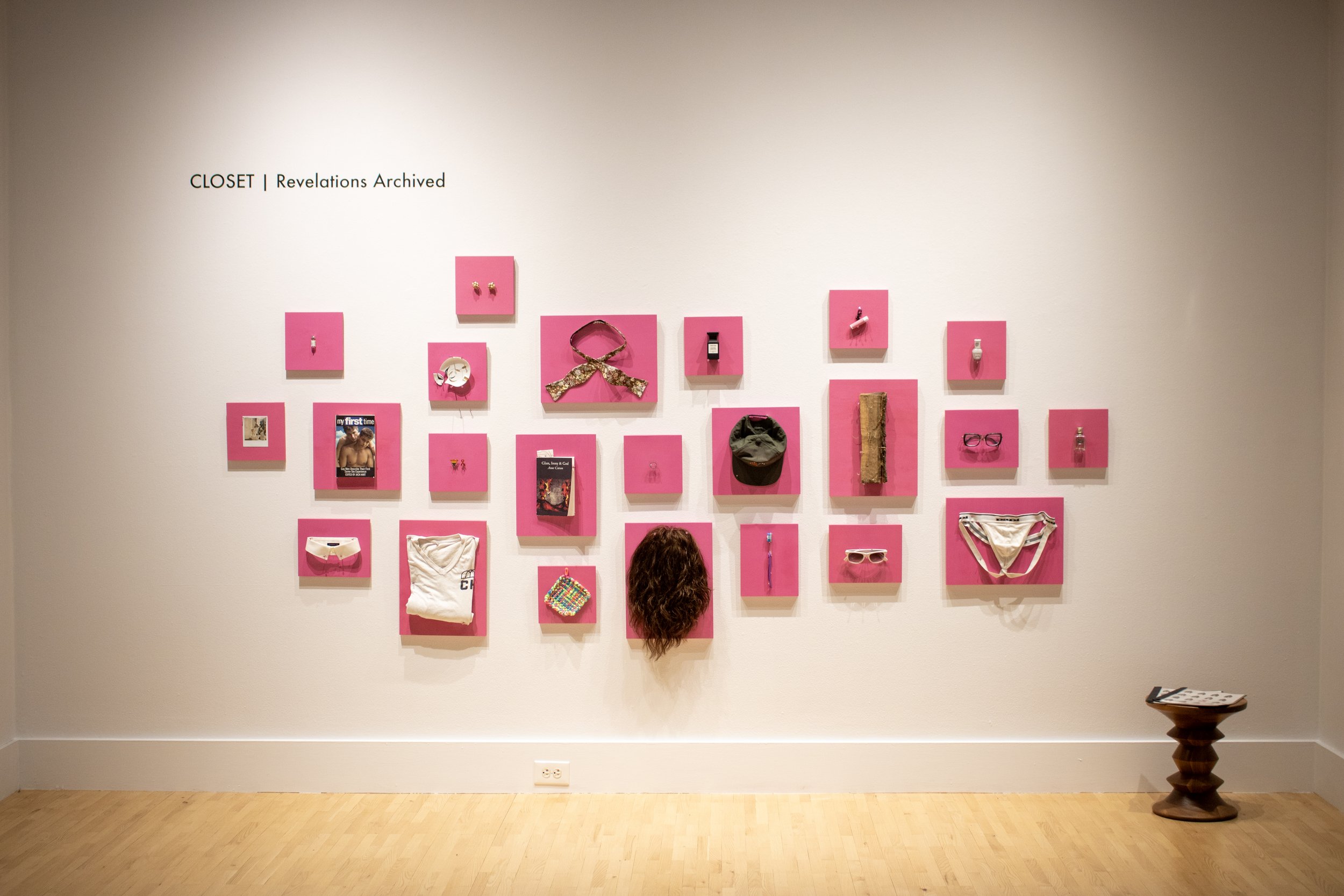
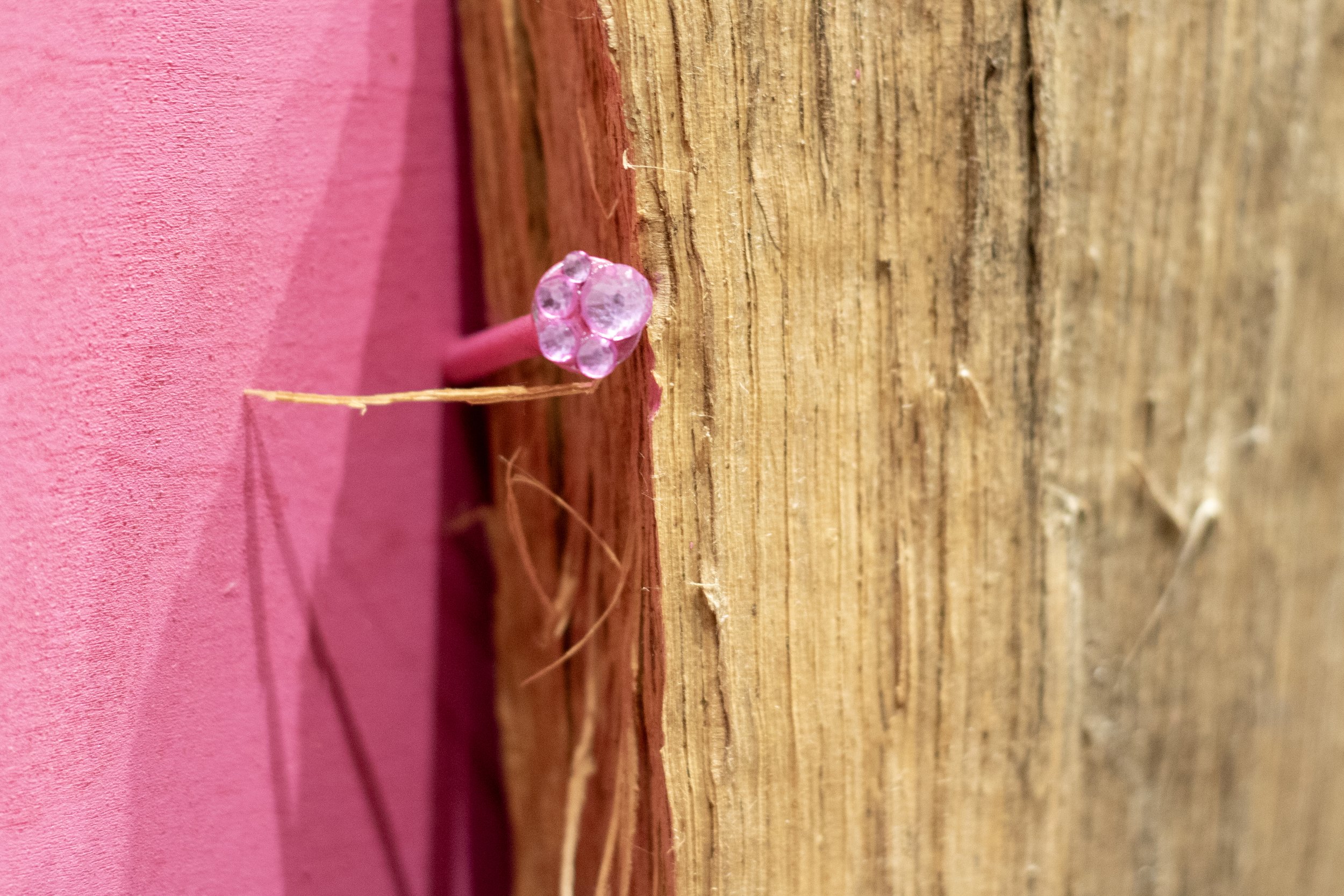

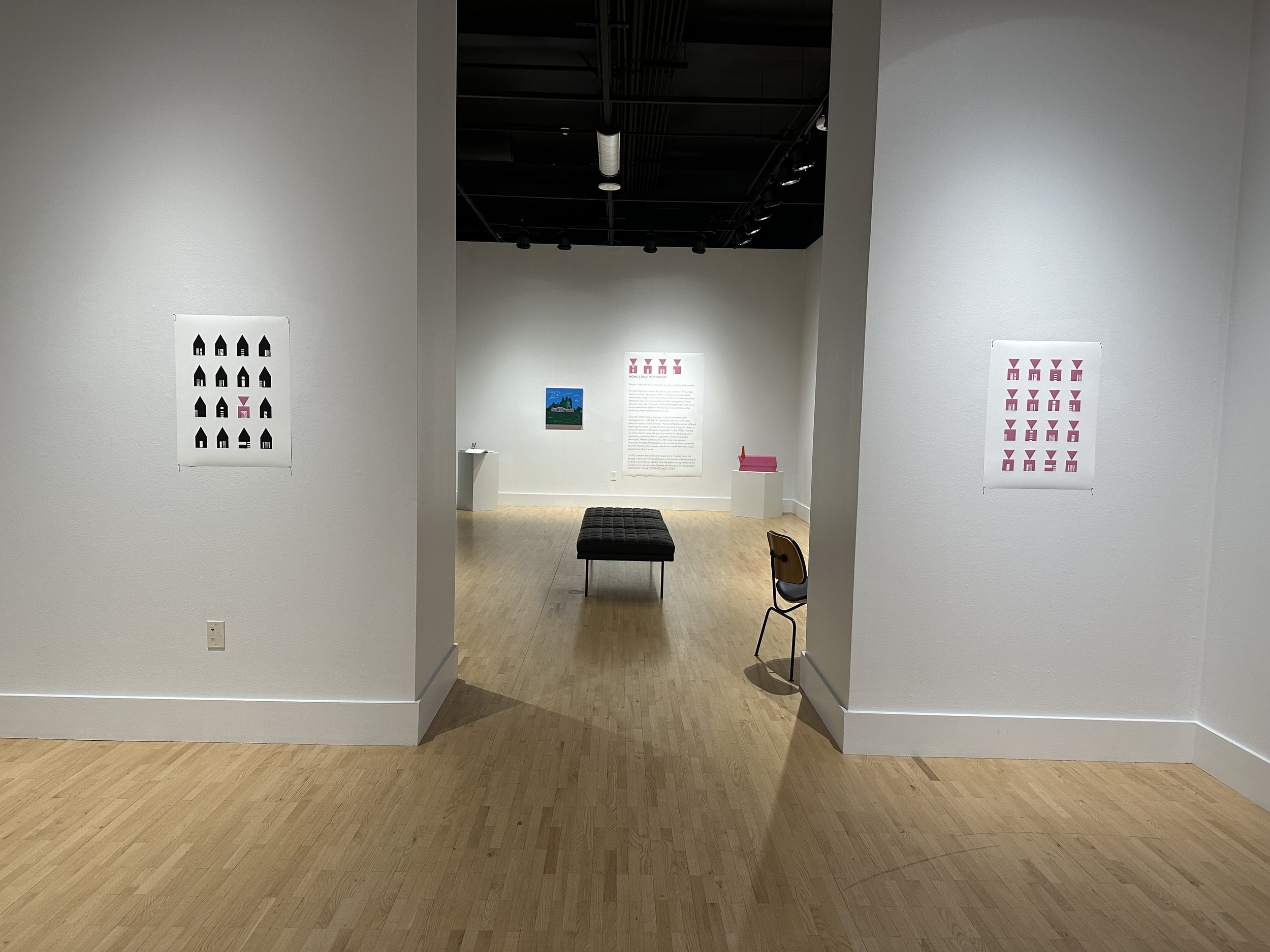



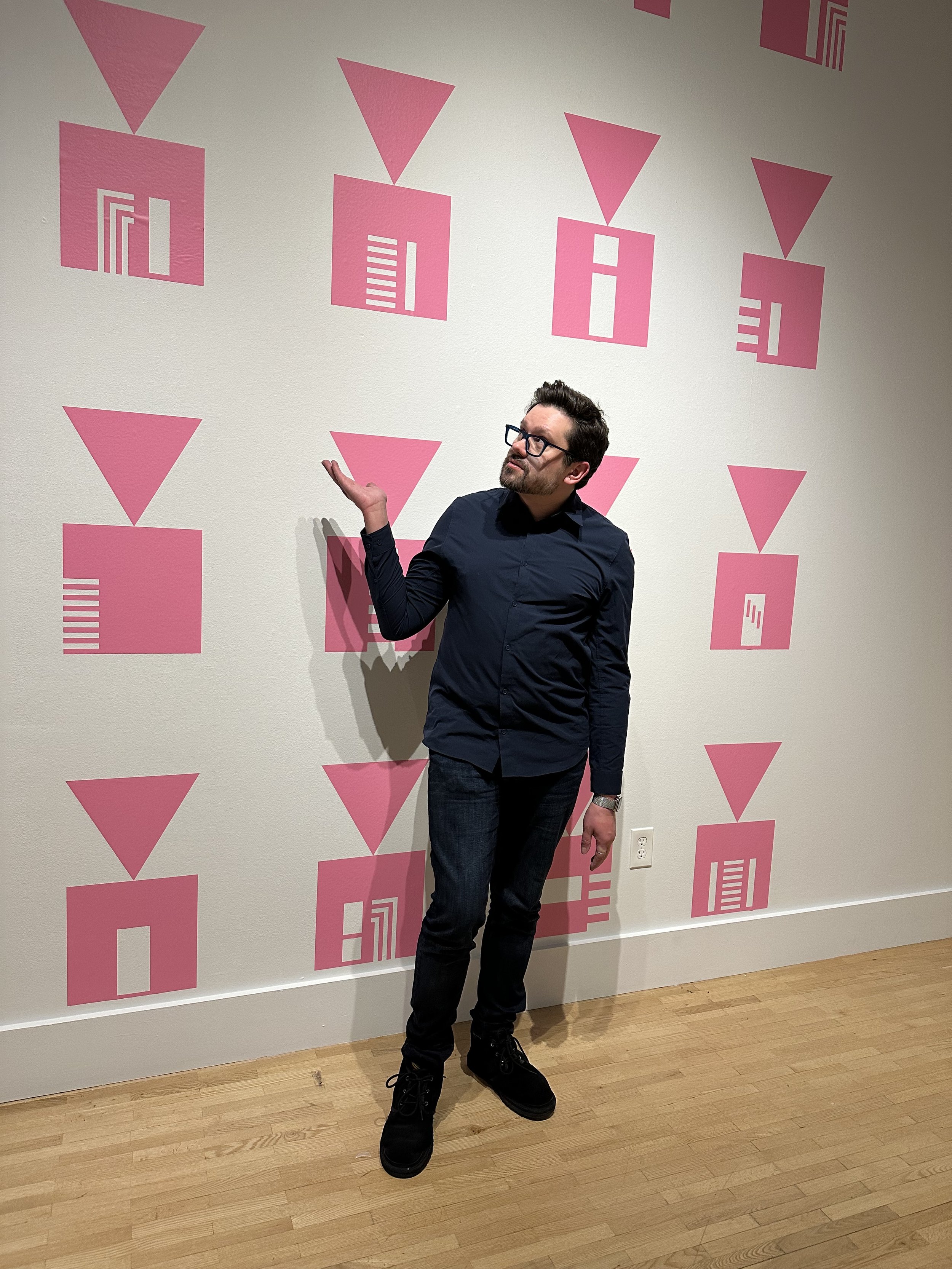
WELCOME HOME | Private vs. Public
After revisiting my childhood home in Port Orchard, Washington this past summer, I began to think about the meaning of “Home.” This was the house where I had my first experience into young queerhood. The memories that are held in a particular place are brought back to the surface as one revisits the past; the first time you held a crush’s hand, the first time you kissed. I remember moving to Michigan when I was in grade school. My parents packed their truck and closed the doors as my brother, and I sat in the back seat. Three days later, the space between my memories of those first moments of early adulthood and where I stood seemed farther away than the 2,384 miles that my family had driven. The mailboxes in WELCOME HOME represent the tension between identity and the ideological construct of “home.” Home carries diverse meanings that are deeply personal. Guests are invited to engage and participate in the writing letters to HOME about what “home” means to them, then place them in a mailbox that corresponds with their identity.

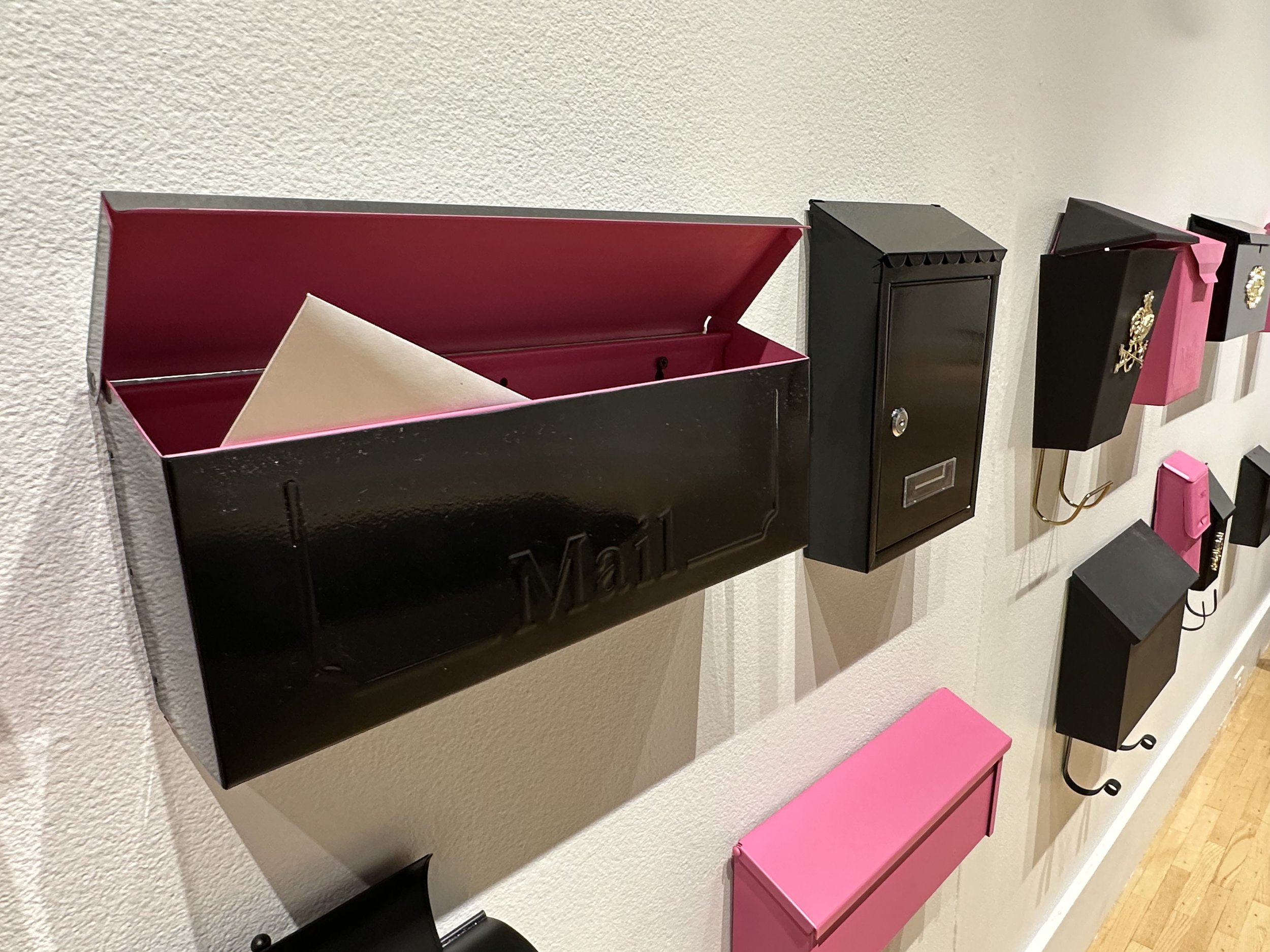

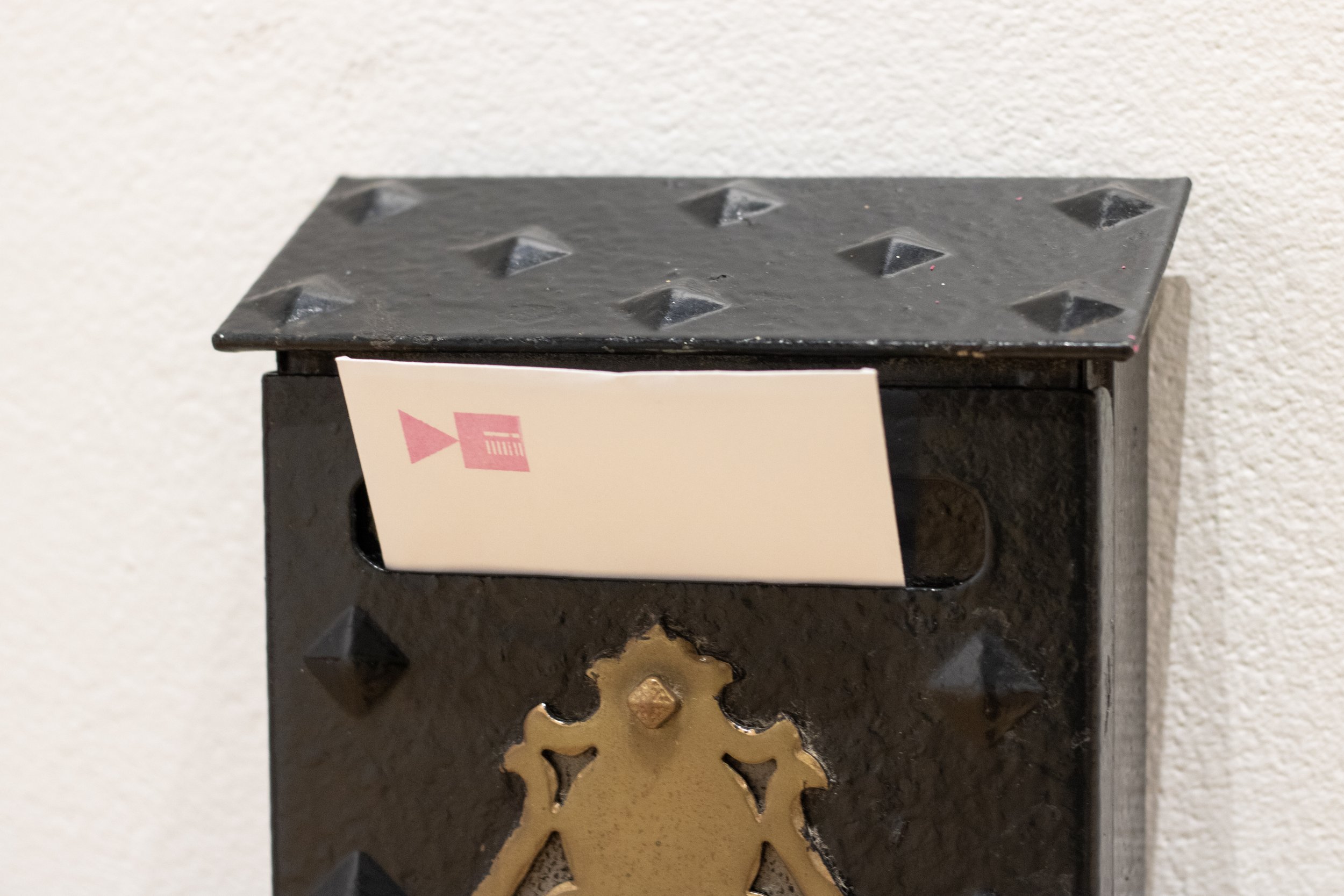

PORTRAITS | Queer Homes
Many of the portraits of queer homes presented, all of which belong to people that I am acquainted with, represent a utopian view of the single-family home; a refusal to adopt preestablished conditions of the built environment that maintains an oppressive social order. José Esteban Muñoz in an essay for Cruising Utopias: The Then and There of Queer Futurity (2009) writes that “a queer aesthetic can potentially function like a great refusal because art manifests itself in such a way that the political imagination can spark new ways of perceiving and acting on a reality that is itself potentially changeable.” For many queer households, the outward projection of queerness enables the threat of discomfort, danger, and violence. It creates a target for those who oppose queerness and queer identities. The rhinestones become a glowing suit of armor for the houses, allowing them to exist beyond the binary ideological construction of the home environment.

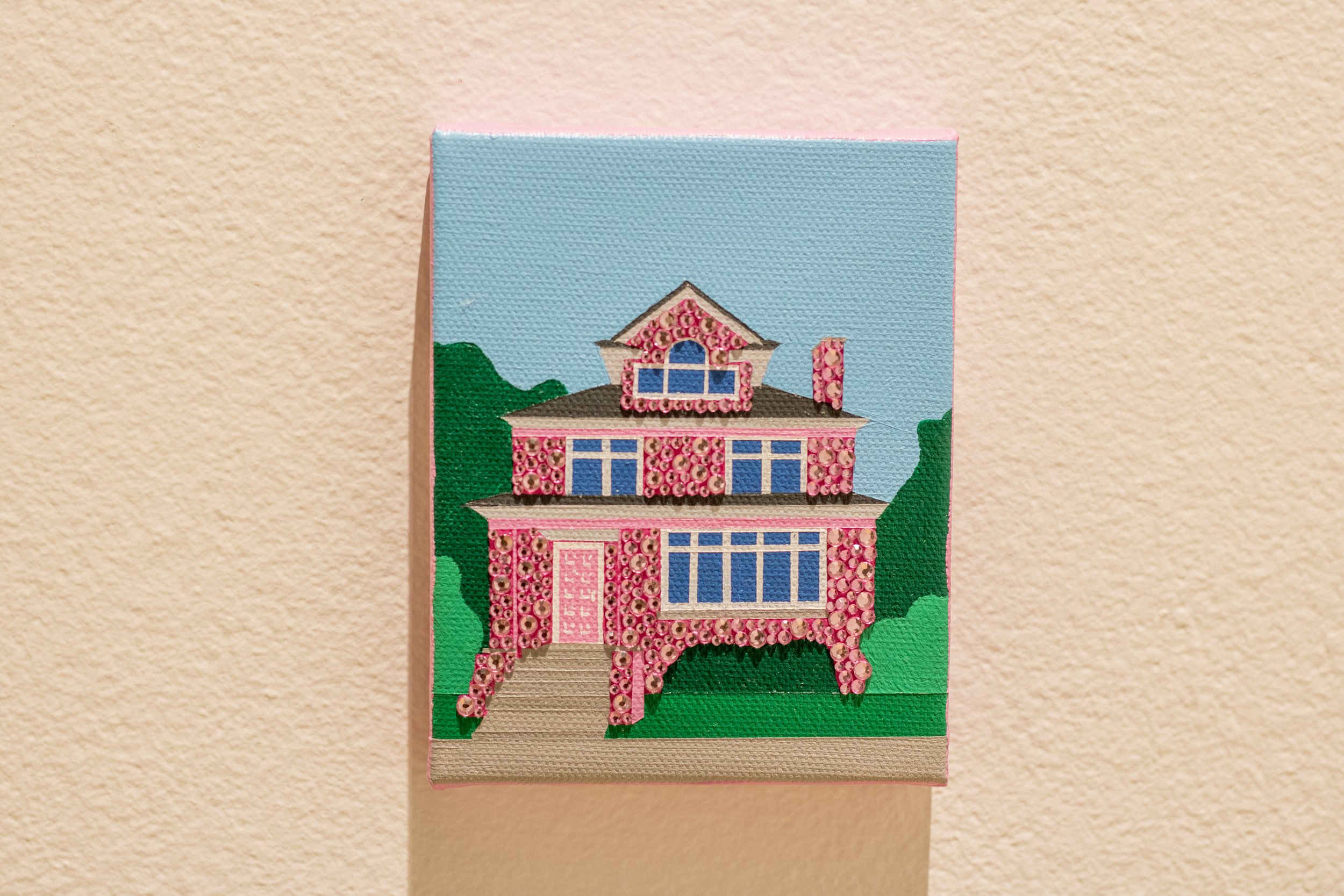




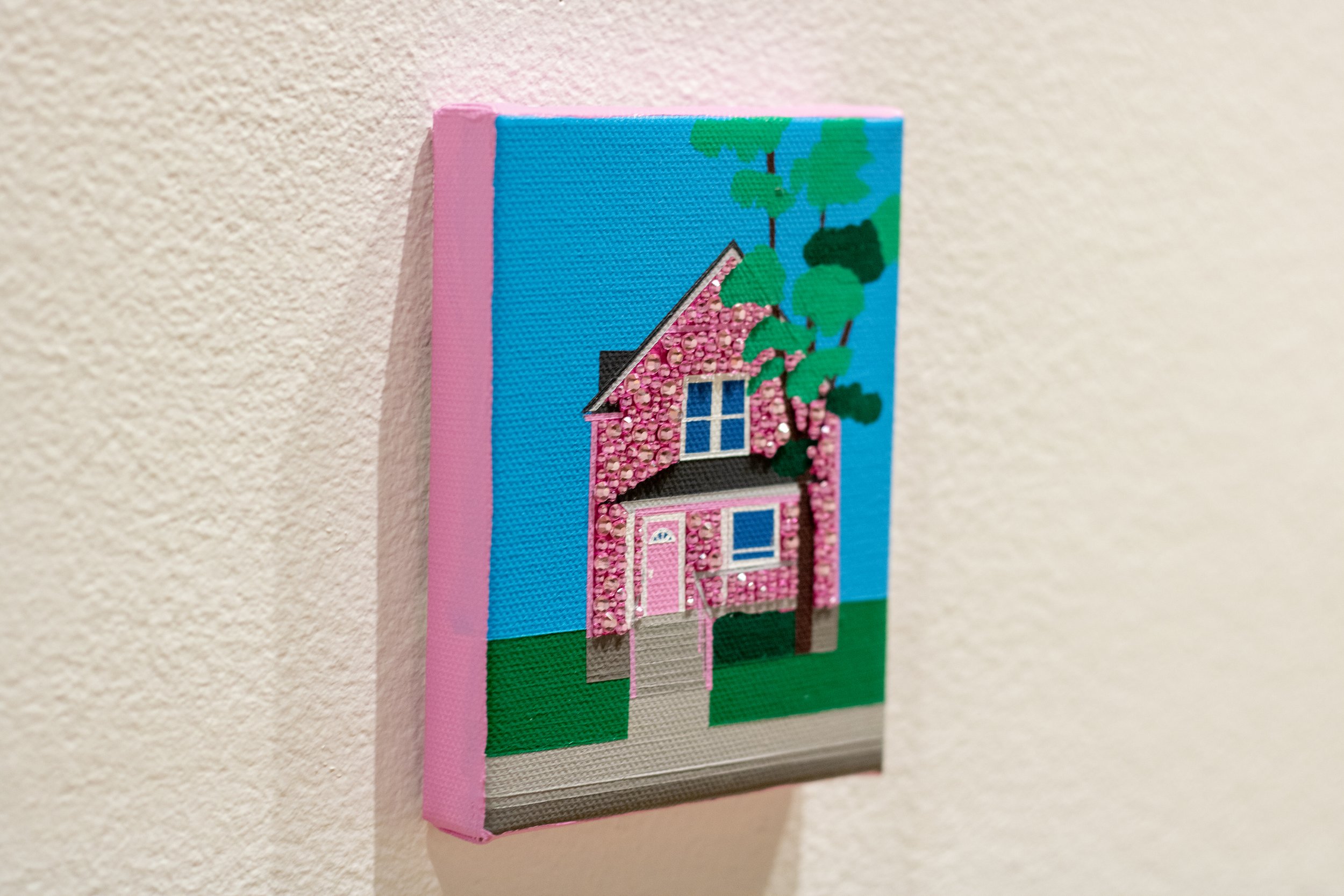
CLOSET | Revelations Archived
The objects that we collect in our home become memories. We hold onto these objects because they either serve a purpose in our daily lives or connect us directly to a time and a place. Laurie Gries writes “we think of someone transmitting some thing to someone else in a precise moment and a specific place.” The collected intimate stories that are shared by these objects help to create a connection to queer domesticity, queer memory, and queer histories of community. “Coming out of the closet” has become a phrase widely used since the 1960s to describe the public disclosure of one’s queerness. The oppressive act of “coming out” positions a queer individual in direct opposition of heteronormative values and ideals. The objects represented tell individual stories that evoke memories, bringing one back to a specific moment and place, expressing the power that objects hold with their material memory.

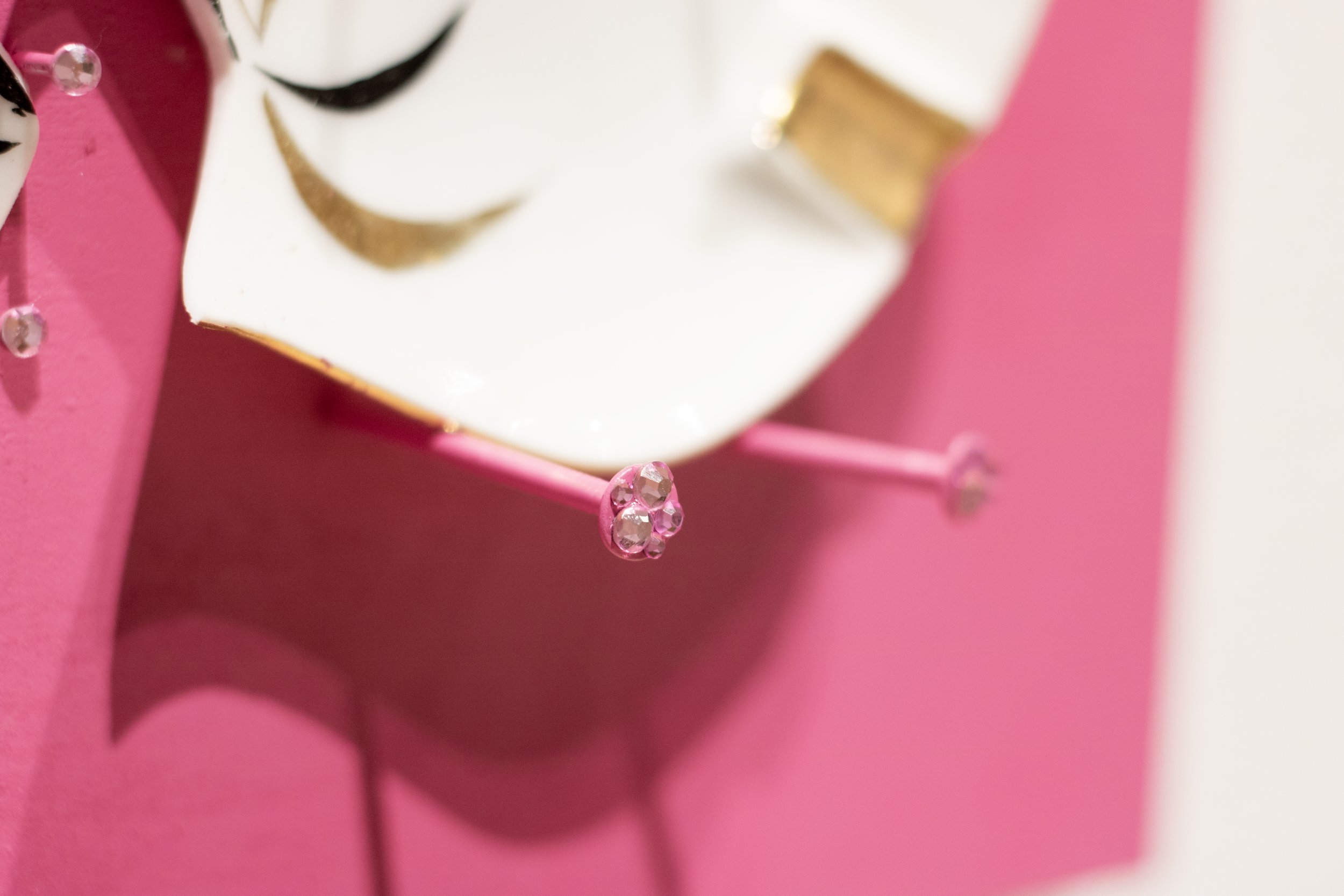


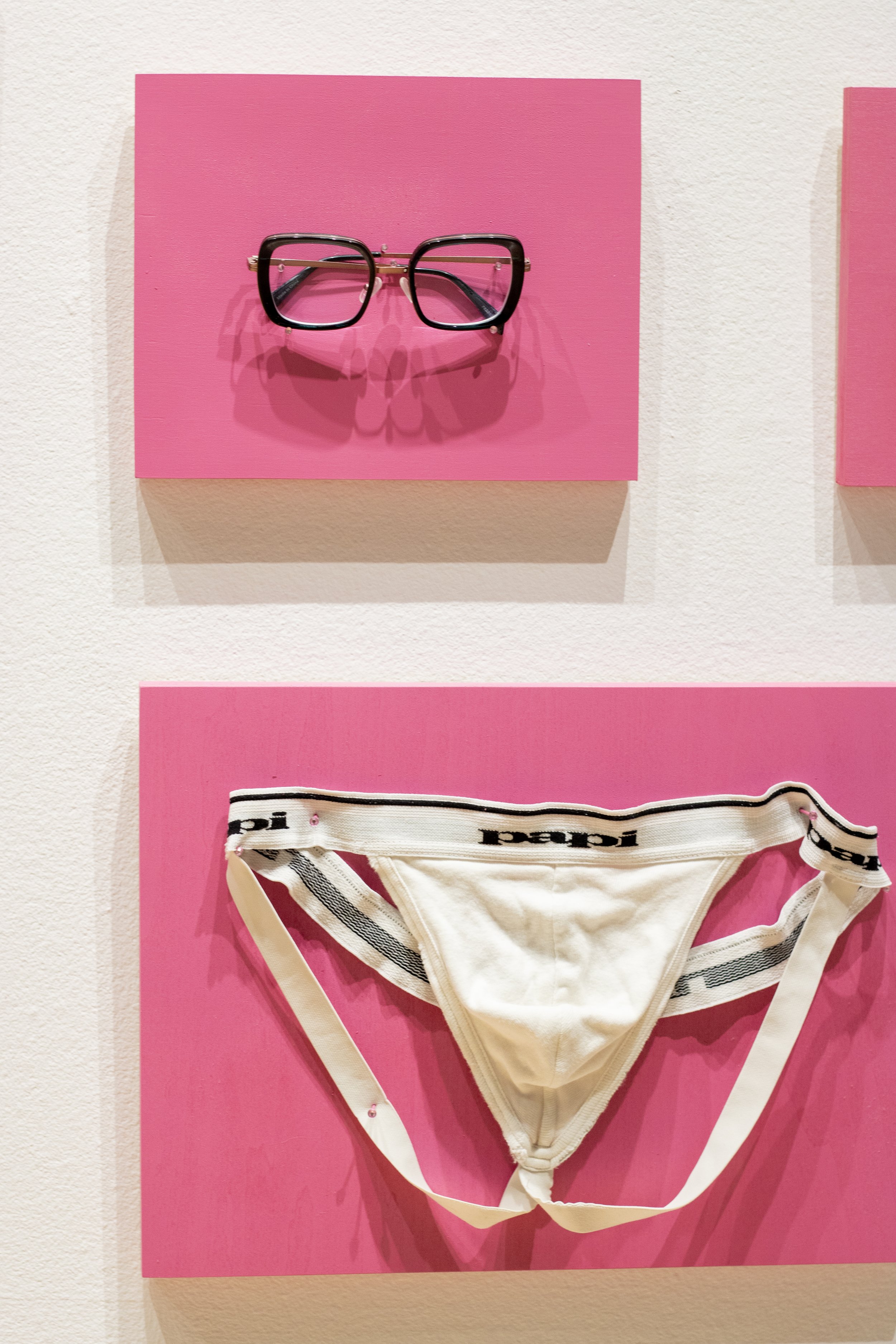

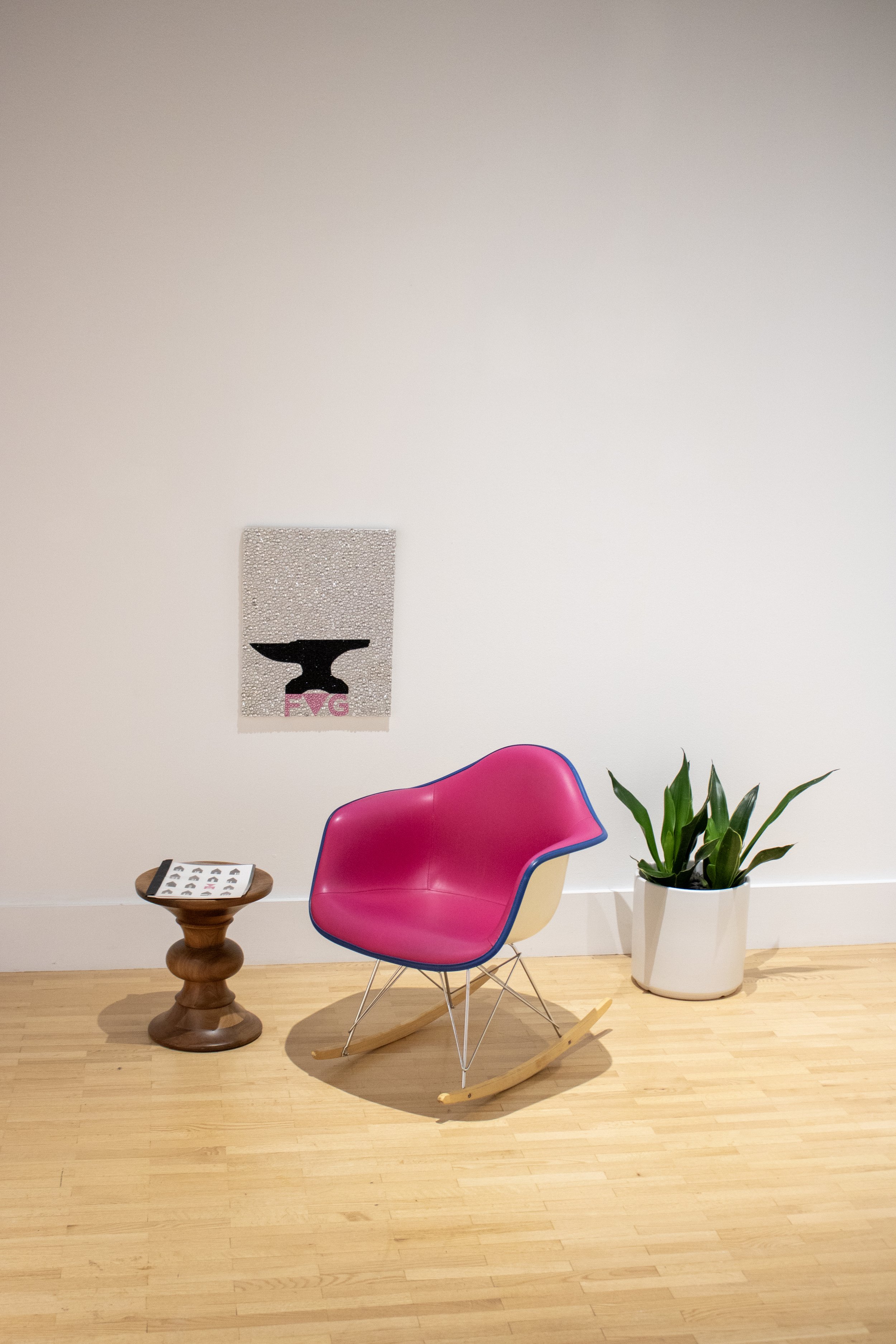

The CLOSET is an ongoing collected archive. If you are interested in participating, please contact Drue using the Contact Form. Drue would love to capture your story.



